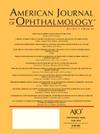美国视网膜静脉阻塞临床试验中的种族代表性。
IF 4.1
1区 医学
Q1 OPHTHALMOLOGY
引用次数: 0
摘要
视网膜静脉阻塞(RVO)是视网膜血管疾病导致视力丧失的第二大常见原因。临床试验往往缺乏少数群体的充分代表性,限制了试验结果的外部有效性和公平性。我们的目的是描述种族人口统计报告的演变,RVO试验参与者的种族和民族组成的变化,以及与试验发起人和合作者类型的相关性。设计回顾性趋势研究对象:美国RVO临床试验的参与者、赞助者和合作者。方法:我们评估了RVO临床试验中患者和发起人及合作者的种族分布。试验数据来自ClinicalTrials.gov,并与2022年美国人口普查局的数据进行了比较。主要结局指标:种族报告和代表性的变化,以及RVO临床试验中代表性与2022年美国人口普查统计数据的比较。结果2008年至2011年间完成的6项(12.2%)试验均未记录种族数据。2012年1月至2017年6月期间,种族报告增加(n = 6/ 29,20.7%),而2017年7月至2022年12月期间(n = 13/ 14,92.9%)(OR 49.8;95% ci: 5.39-460.47;p < 0.0001)。亚洲参与者的比例从4.2%上升到15.9% (OR 4.37;95% ci 2.49-8.37;p<0.0001),黑人参与者从6.1%上升到20.7% (OR 4.03;95% ci 2.51-6.85;p < 0.0001)。相反,白人参与者从73.8%下降到56.0% (OR 0.45, 95% CI 0.34-0.59;p<0.0001),西班牙裔/拉丁裔参与者从13.1%下降到5.4% (OR 0.38;95% ci 0.26-0.56;p < 0.0001)。与2022年美国人口普查数据相比,美国总人口的种族分布与RVO临床试验的总入组人数有显著差异(p<0.0001)。政府和学术参与分别与白人较少和黑人较多相关(p≤0.01)。从2008年到2022年,RVO临床试验中种族和民族人口统计资料的记录显著增加。尽管招募的亚洲和黑人患者有所增加,但在RVO试验参与者中,西班牙裔人群的代表性仍然明显不足,这突出了在招募中需要更大的包容性。本文章由计算机程序翻译,如有差异,请以英文原文为准。
Ethnoracial Representation in U.S. Clinical Trials for Retinal Vein Occlusion.
PURPOSE
Retinal vein occlusion (RVO) is the second most common cause of vision loss from retinal vascular disease. Clinical trials often lack adequate representation of minority groups, limiting the external validity and equity of trial results. We aimed to characterize the evolution of ethnoracial demographic reporting, changes in the racial & ethnic composition of RVO trial participants, and correlations with trial sponsor and collaborator types.
DESIGN
Retrospective trend study SUBJECTS: Participants, sponsors, and collaborators in RVO clinical trials based in the United States (U.S.) METHODS: We assessed the ethnoracial distribution of patients and sponsors & collaborators in RVO clinical trials. Trial data was sourced from ClinicalTrials.gov and compared with 2022 U.S. Census Bureau data.
MAIN OUTCOME MEASURES
Change in ethnoracial reporting and representation, and comparison of representation within RVO clinical trials with 2022 U.S. Census demographics.
RESULTS
Racial data was not documented for all 6 (12.2%) trials completed between 2008 and 2011. There was increased ethnoracial reporting between January 2012 to June 2017 (n = 6/29, 20.7%) vs July 2017 to December 2022 (n = 13/14, 92.9%) (OR 49.8; 95% CI: 5.39-460.47; p<0.0001). The proportion of Asian participants increased from 4.2% to 15.9% (OR 4.37; 95% CI 2.49-8.37; p<0.0001), and Black participants rose from 6.1% to 20.7% (OR 4.03; 95% CI 2.51-6.85; p<0.0001). Conversely, White participants decreased from 73.8% to 56.0% (OR 0.45, 95% CI 0.34-0.59; p<0.0001), and Hispanic/Latino participants decreased from 13.1% to 5.4% (OR 0.38; 95% CI 0.26-0.56; p<0.0001). Compared to the 2022 US Census data, the ethnoracial distribution of the total U.S. population is significantly different than the total enrollment in RVO clinical trials (p<0.0001). Government and academic involvement were correlated with less White and more Black representation respectively (p≤0.01).
CONCLUSIONS
From 2008 to 2022, there has been a notable increase in the documentation of racial and ethnic demographics in RVO clinical trials. Although the recruitment of Asian and Black patients has increased, the Hispanic population remains significantly underrepresented among RVO trial participants, highlighting the need for greater inclusivity in enrollment.
求助全文
通过发布文献求助,成功后即可免费获取论文全文。
去求助
来源期刊
CiteScore
9.20
自引率
7.10%
发文量
406
审稿时长
36 days
期刊介绍:
The American Journal of Ophthalmology is a peer-reviewed, scientific publication that welcomes the submission of original, previously unpublished manuscripts directed to ophthalmologists and visual science specialists describing clinical investigations, clinical observations, and clinically relevant laboratory investigations. Published monthly since 1884, the full text of the American Journal of Ophthalmology and supplementary material are also presented online at www.AJO.com and on ScienceDirect.
The American Journal of Ophthalmology publishes Full-Length Articles, Perspectives, Editorials, Correspondences, Books Reports and Announcements. Brief Reports and Case Reports are no longer published. We recommend submitting Brief Reports and Case Reports to our companion publication, the American Journal of Ophthalmology Case Reports.
Manuscripts are accepted with the understanding that they have not been and will not be published elsewhere substantially in any format, and that there are no ethical problems with the content or data collection. Authors may be requested to produce the data upon which the manuscript is based and to answer expeditiously any questions about the manuscript or its authors.

 求助内容:
求助内容: 应助结果提醒方式:
应助结果提醒方式:


